La Rioja is a province in the north of Spain renowned for its local wine industry. We spent 3 days exploring and wine tasting in Rioja, staying in a hotel in the capital of the region, Logroño.
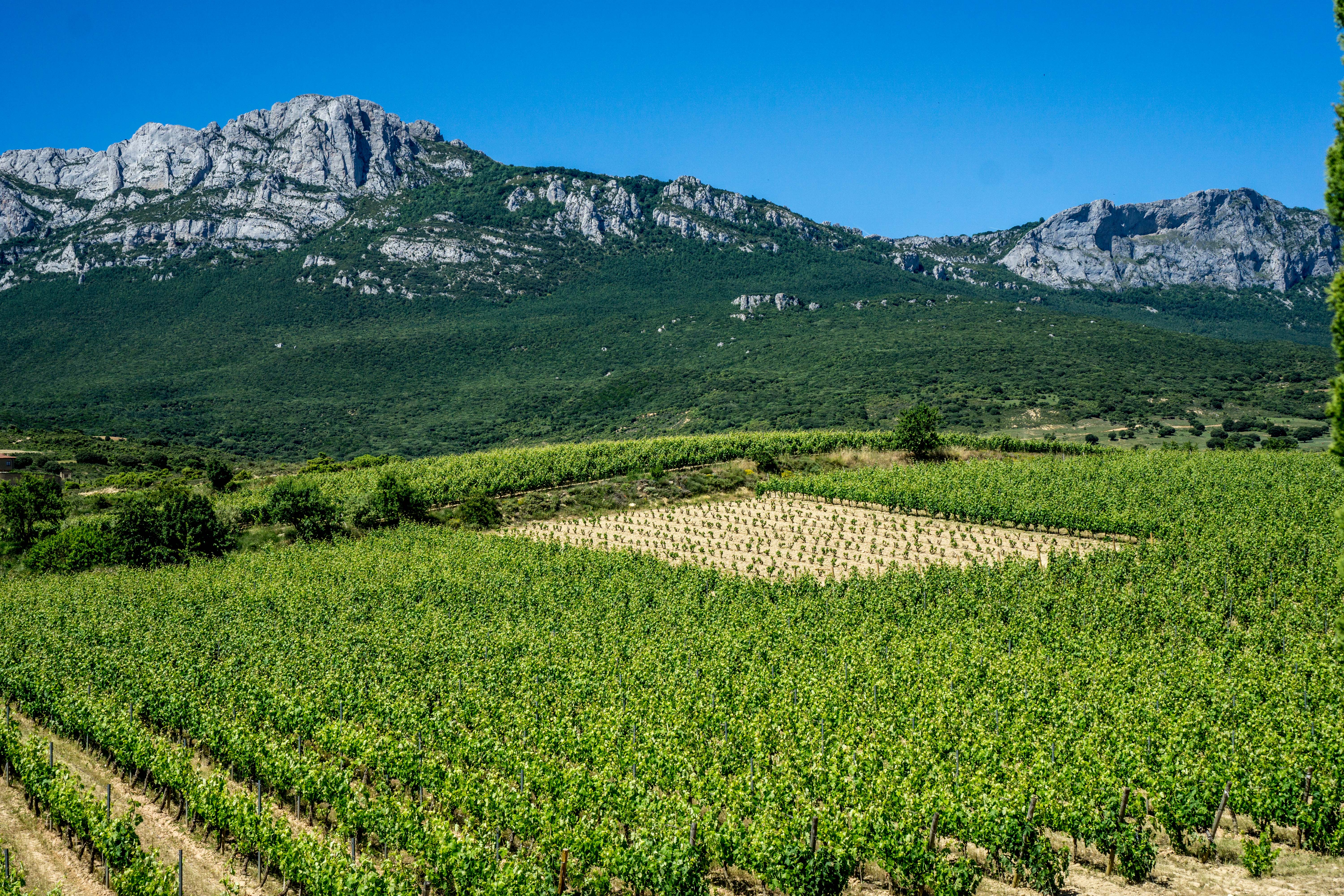
The region is best known for its use of tempranillo, which is considered native to Rioja. Tempranillo is one of my favourite wines so going here was a bucket list tick for me.
Some wineries produce wines with 100% tempranillo, but most are a blend that consists of approximately 60–80% tempranillo with up to 20% of garnacha and much smaller proportions of mazuelo and graciano.
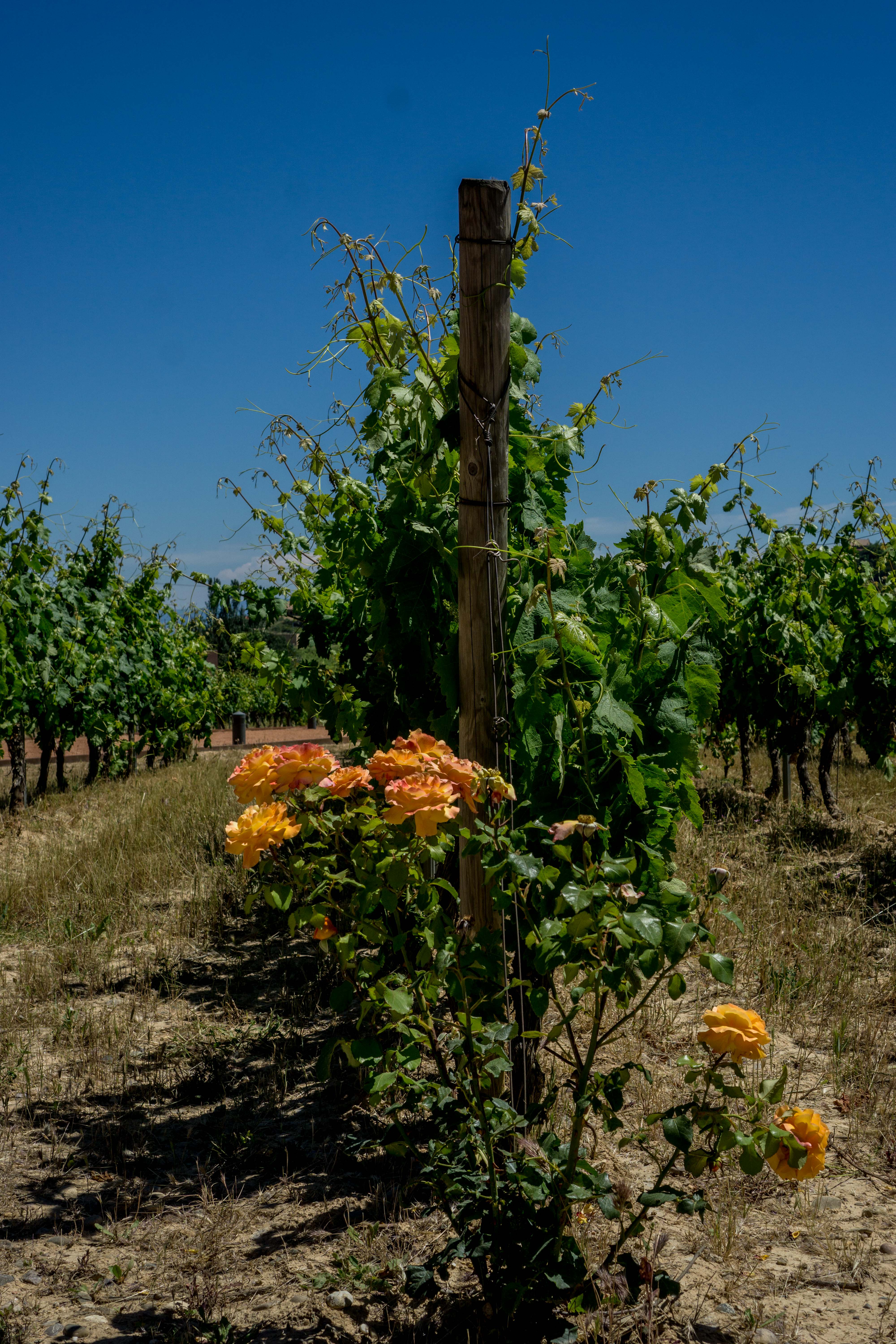
Tempranillo
The wineries (called “bodegas” in Spanish) are dotted around the region, but many are in or near to the small towns of Guardia and Haro. Both towns are worth a visit, but I found Guardia particularly amazing. It is a beautiful walled town built on top of a hill overlooking the surrounding vineyards. It has old sandstone buildings lining narrow cobblestoned streets and there is a pathway around the edge of the town, which provides spectacular views of the surrounding valley and distant mountains of the neighbouring Basque region.
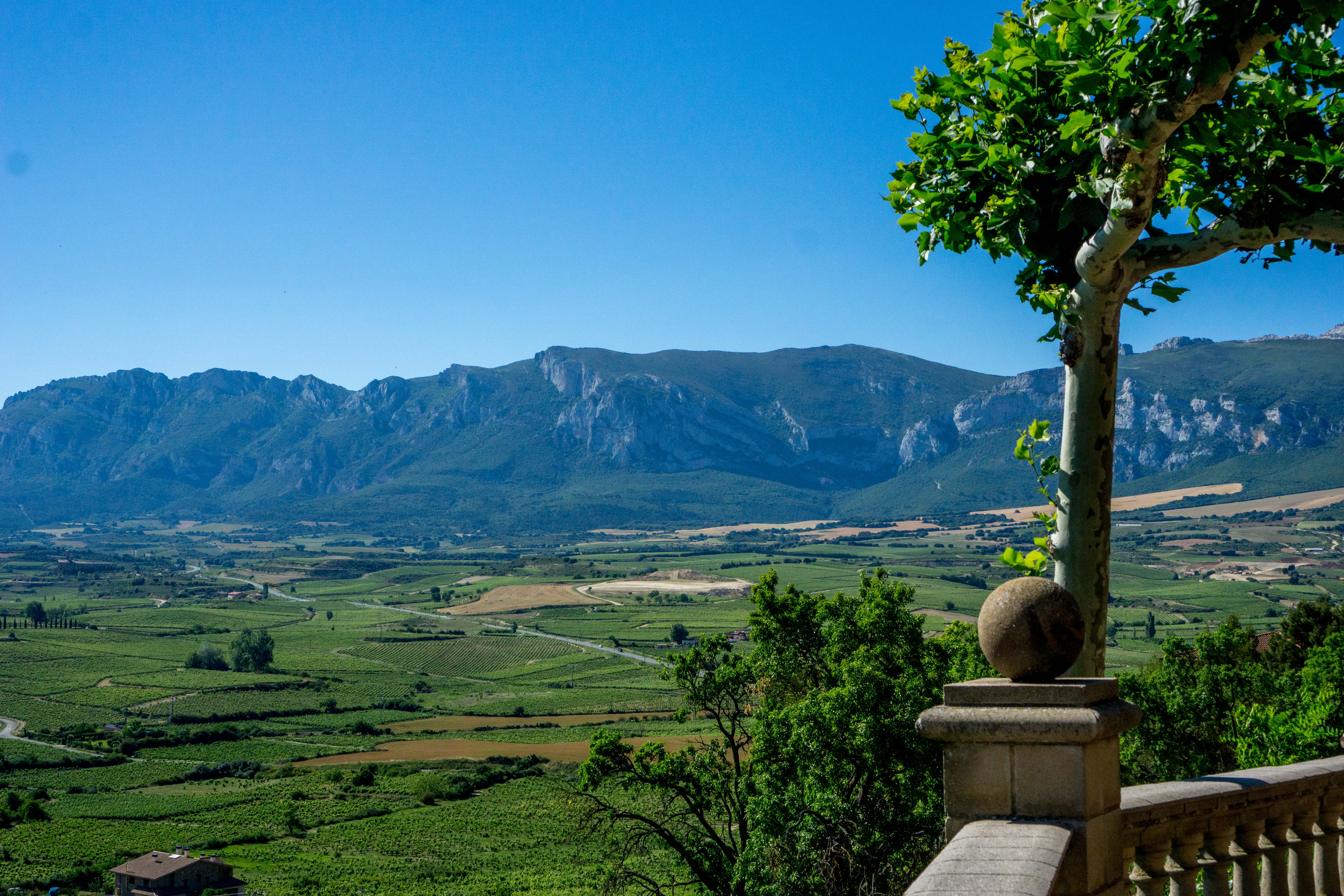
A view of La Rioja valley from the walled town of Guardia
There is a very long history of wine making in this region, dating as far back as the 11th century BC. However, the region became increasingly known from the 1850s when many of the French vineyards were destroyed by the phylloxera epidemic. This provided a major catalyst in the expansion and modernisation of the Rioja wine industry because many French wine makers came from Bordeaux to Rioja, where the vines were largely unaffected by phylloxera, bringing with them extensive experience and knowledge, and of course, a French influence. A distinct characteristic of Rioja wine is therefore the effect of oak ageing. This was introduced by the Bordeaux wine makers, and as a result, originally French oak was used to age the wines. Many of the bodegas still use French oak, but at a cost of about €1000 per barrel, American oak barrels are also in use (costing about €500 per barrel). One bodega we went to bought French oak planks and had the barrels made at Spanish cooperages, which enables French oak to be used at a fraction of the cost.
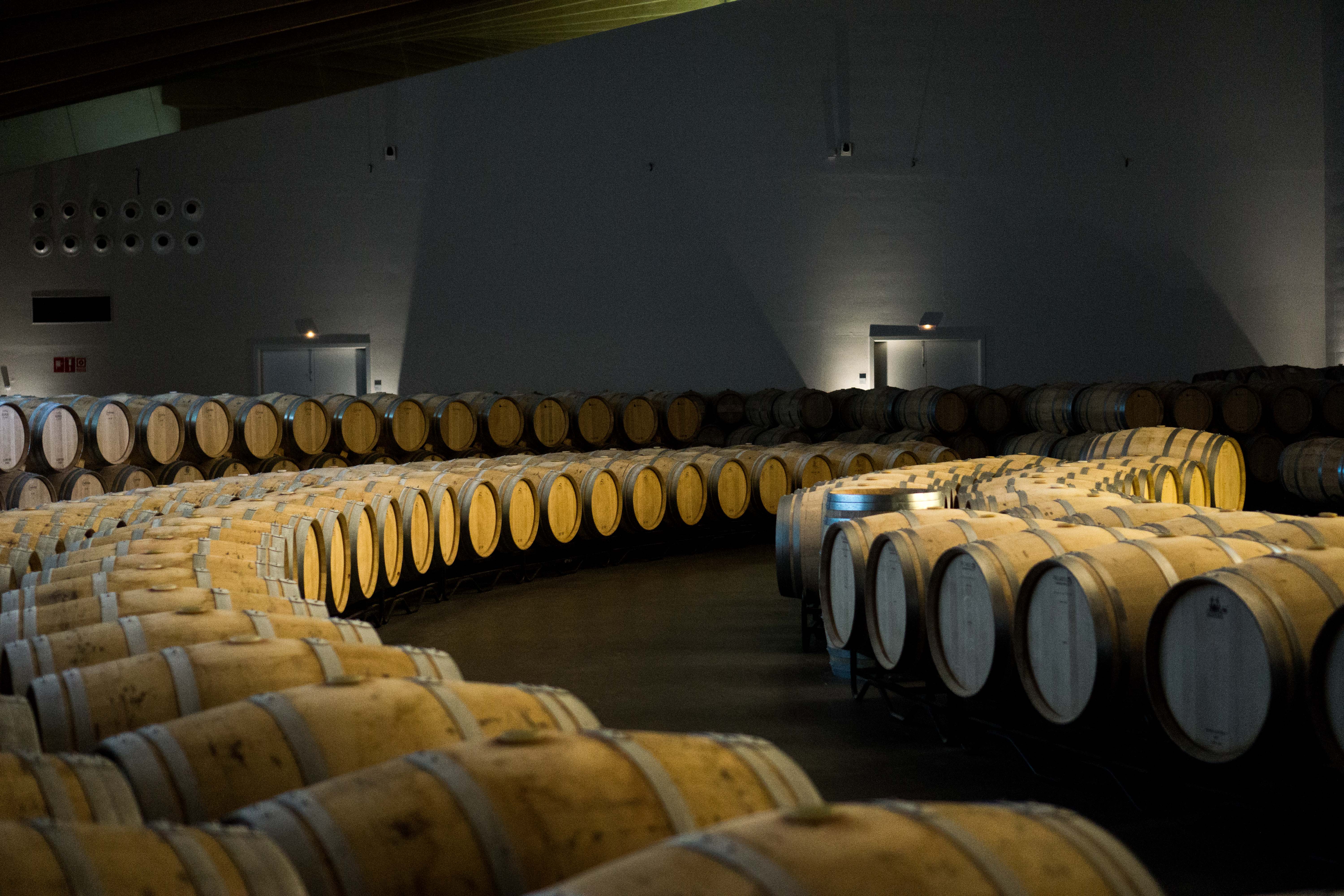
The barrel room at Ysios bodega, where only French oak is used
Rioja has a DOC (qualified destination of origin), which is a regulatory classification system that places strict rules around quality and geographic origin of certain produce, including wine. It therefore controls how wine must be produced and the use of the name “Rioja”. DOC is the recognition of superior quality. The red wines from Rioja are described as either:
- Crianza: aged for at least 2 years, with 1 year in the oak barrel and 1 year in the bottle
- Rioja Reserva: aged for at least 3 years, with at least 1 year in oak
- Gran Reserva: aged for at least 5 years, with at least 2 years in oak
While we were in Rioja we visited four wineries. Unlike in Australia where you drive around and just turn up for a taste, in Rioja, you generally need to book a visit in advance. This requires a bit of research and emailing, but it’s worth the effort and most vineyards now offer tours of their bodegas in English.
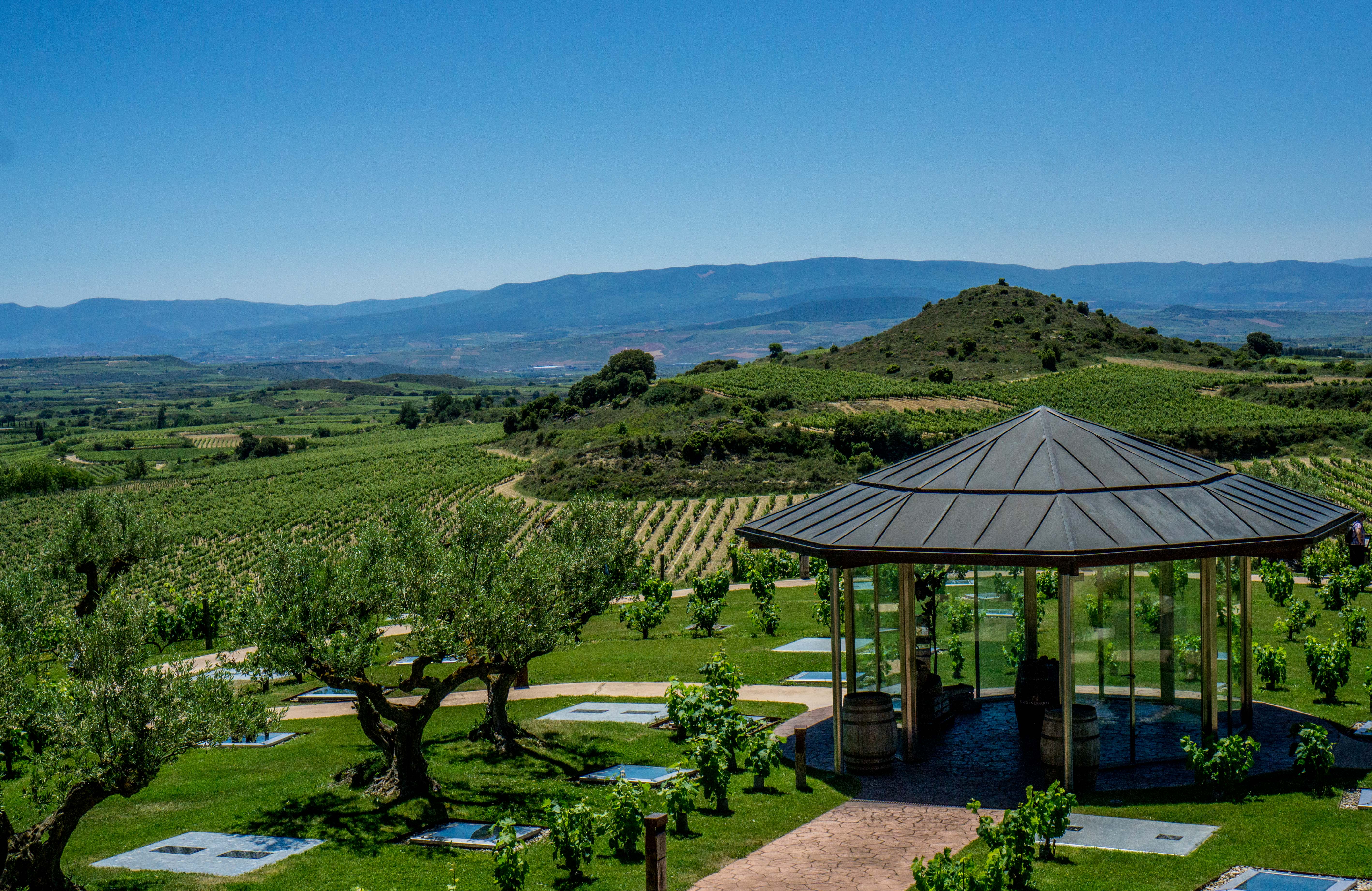
A view of the gardens and surrounding vineyards at Eguren Ugarte bodega
A visit costs between €15–20 per person and usually consists of a one hour tour of the bodega and a tasting of two wines, usually red, but some vineyards also have white (either a viura or a white tempranillo) and rosé. All of our tours were fantastic and well worth the money. And because you have already paid for the tour you don’t feel obliged to buy a bottle (as is often the case with free wine tasting). Although, I was amazed at how cheaply you could buy cellar door wine in Rioja, with bottles starting from as little as €4.
Our first visit was to Ysios, a modern vineyard with an amazing building, architecturally designed to reflect the landscape. The grapes are handpicked, but the remainder of the process relies on modern technology such as stainless steel vats and air-conditioned barrel rooms.
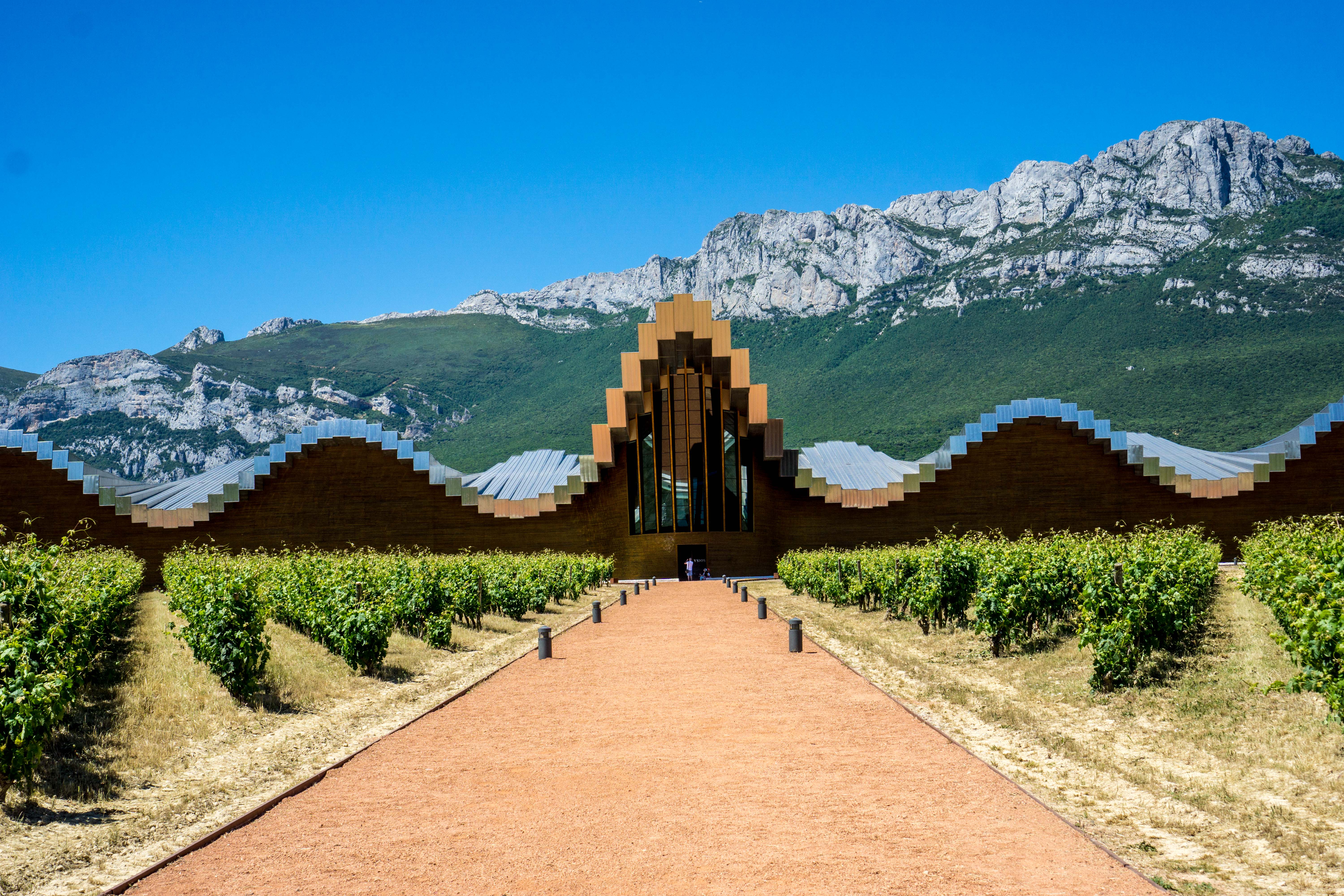
Ysios bodega, in the valley below the town of Guardia
The second bodega we visited was CVNE, which is an old, traditional vineyard located in the town of Haro that has been run by the same family since it started in 1879. They still use wooden vats and the original barrel room, which was designed by Aleixandre Gustave Eiffel (the same guy as the eponymous tower). The temperature inside is maintained at 15ºC and the humidity at 70% by the thick stone walls and tiled roof without any technological intervention — which is quite amazing given the outside temperature is 35ºC.
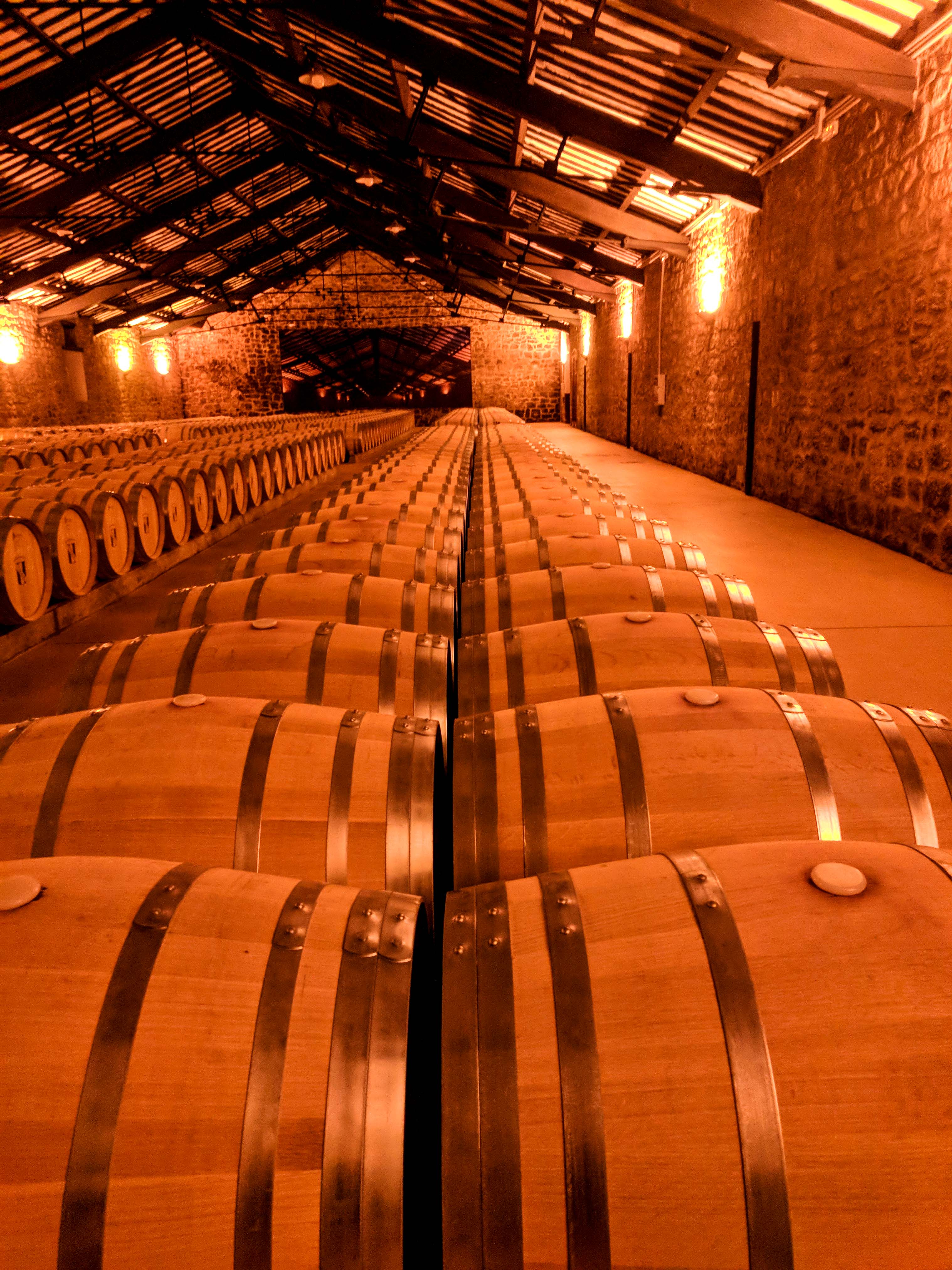
The barrel room at CVNE, designed by Eiffel
We also went to Ramón Bilbao for a tasting. It is one of the few bodegas where you can do a tasting without a tour and without booking in advance. It is also open on Sundays, which most of the bodegas are not. This winery is quite old, dating back to 1924, but is quite commercial, making it easier to visit.
We did a self-guided tasting of a number of wines for between €1–4 each taste. The wines are in an enomatic tasting machine so you simply load a card with a chosen amount and pour your own tastings. They also provided detailed tasting notes to read about each wine. Of all the wines we tasted, my favourite was from Ramón Bilbao. It was their “Mirto” — a 2012 Rioja of 100% tempranillo. But for €34 per bottle, I unfortunately didn’t buy any.
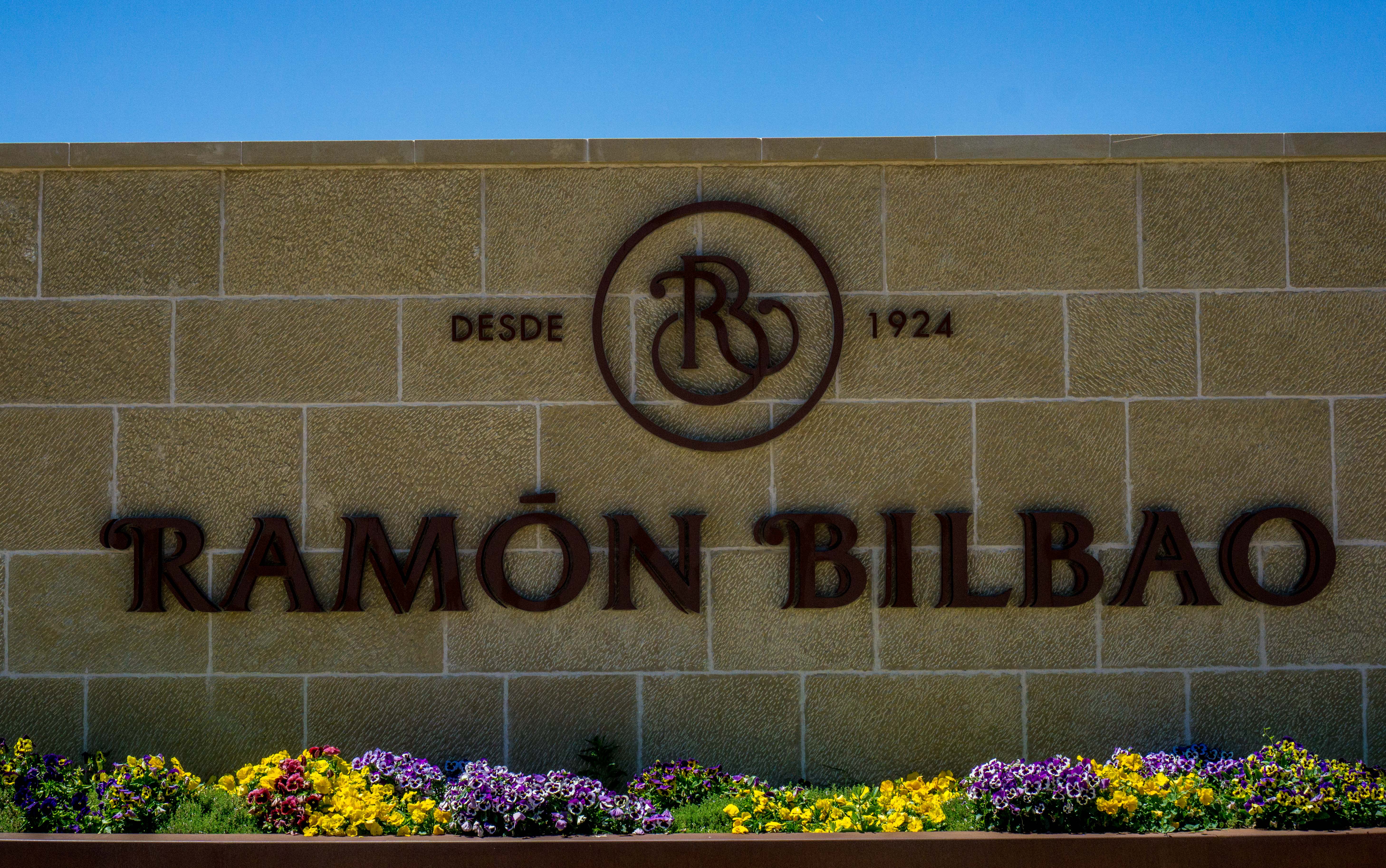
The entrance to Ramón Bilbao
The final winery we visited, and probably my favourite bodega, was Eguren Ugarte — family run vineyard since 1879. Here we had a tour, tasting and lunch at their restaurant for only €39, which was incredibly good value.
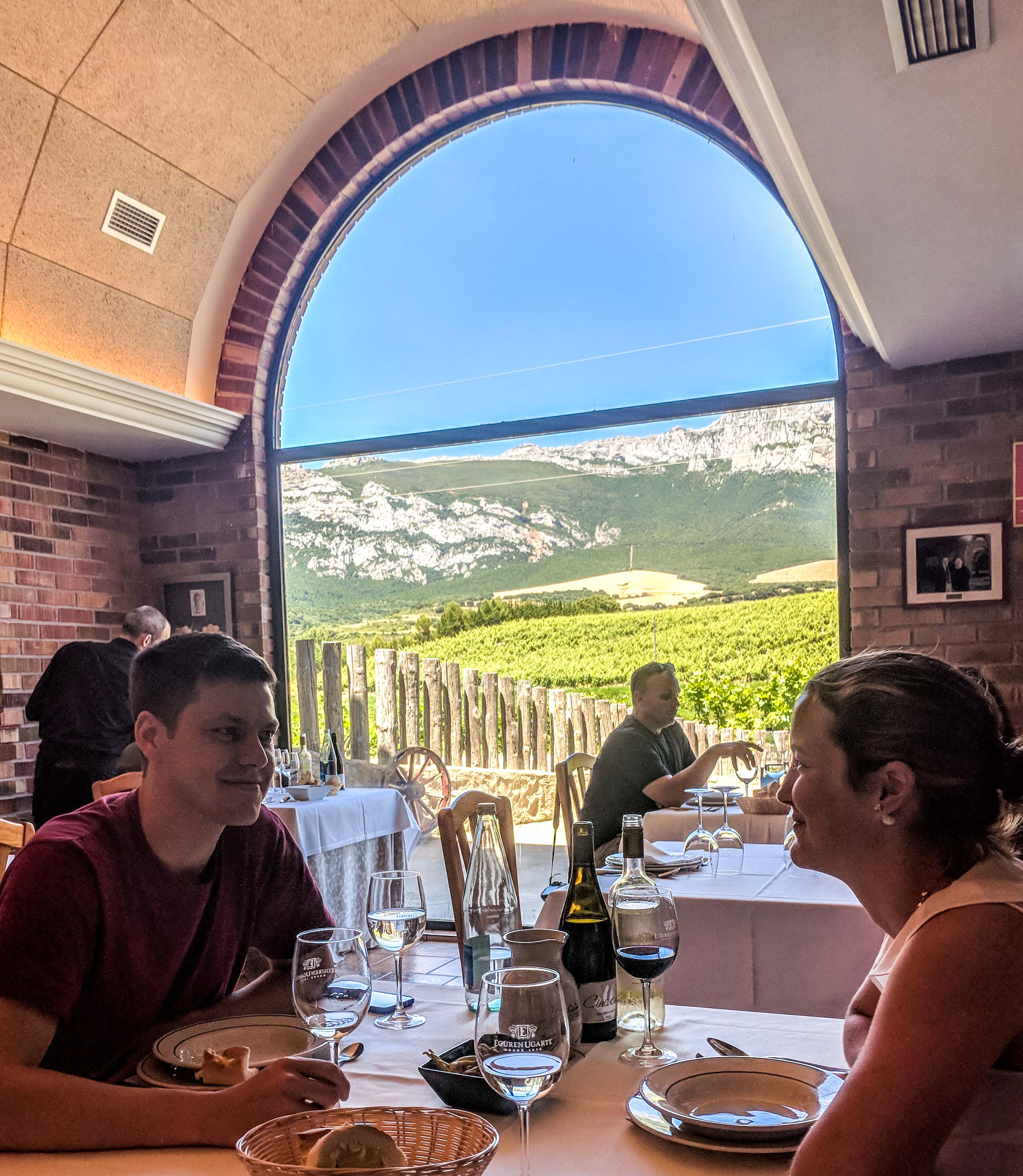
Our lunch at Eguren Ugarte, with a spectacular view
The tasting had 4 wines (a white, a rosé and two reds) and our lunch was 5 courses accompanied by 3 bottles of wine! For the record, we did not finish the 3 bottles, but we did buy two bottles of the rosé, which were only €5 each and one of the nicest I’ve had. The bodega itself is incredible. It has an elaborate 2,000m system of wine cave tunnels that we wandered through on our tour.
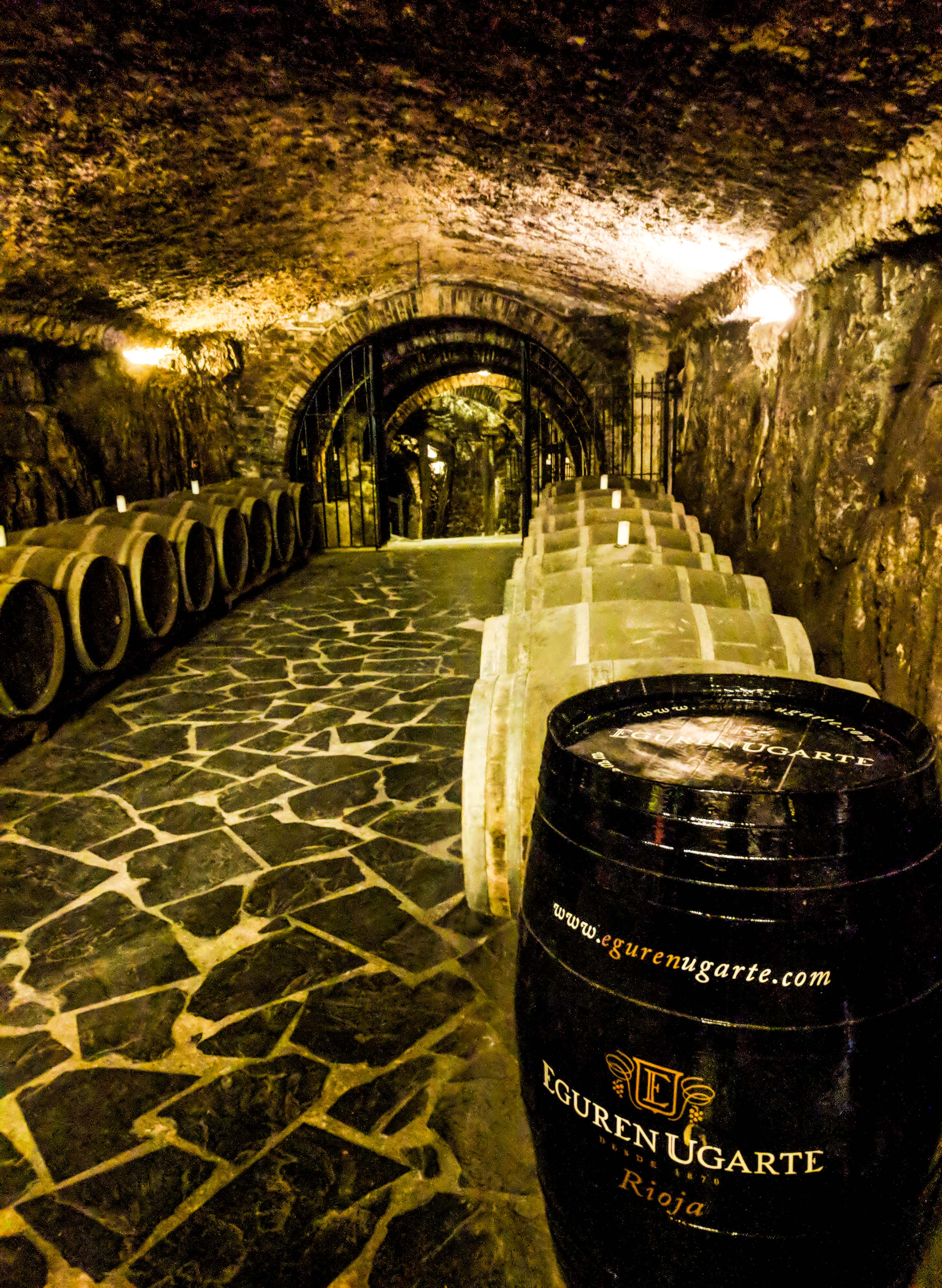
In the wine cave tunnels of Eguren Ugarte
If you are a client of the vineyard you can store your wine in your own little niche in the tunnel (called “nichos”) and they have tables and chairs in secret corners where you can sit and drink your wine and they can bring you food from the restaurant to enjoy with your wine. The grounds were also beautifully manicured… and the wine was very good.
It was great to see a range of different bodegas, from very old to modern. There were many more that I would have loved to visit. The landscape is breathtaking and the wine-making history of the region is very interesting. It is also very reasonably priced, both for visits to the bodegas and for buying wine from the cellar. A visit to la Rioja is a must for any wine lover.
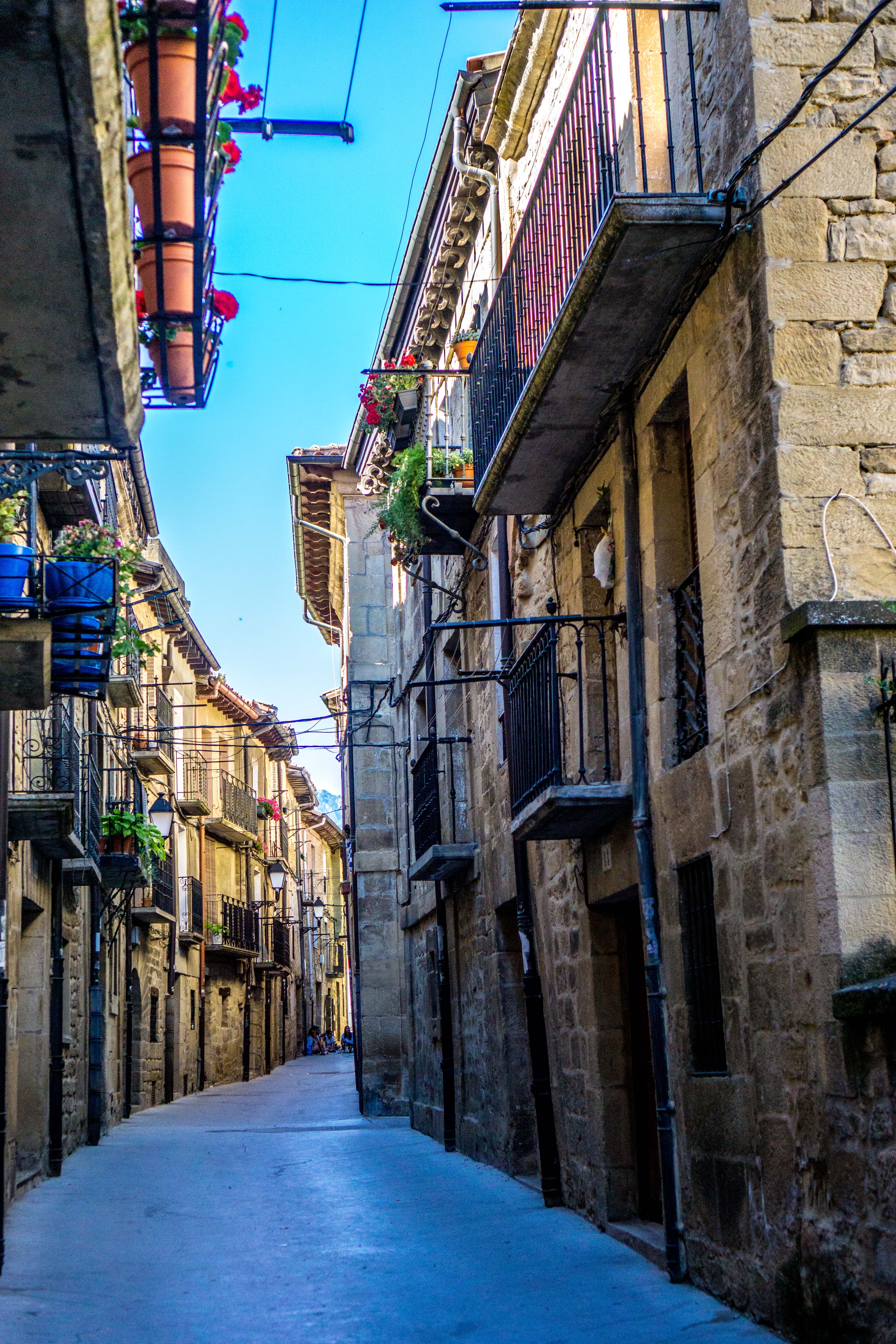
In the town of Guardia
After our time in Rioja we drove through the mountainous Basque Country to the coastal resort town of San Sebastián where I am now sitting writing this post. It is known for its beaches and world-renowned restaurants, and in particular, for its high concentration of Michelin stars…